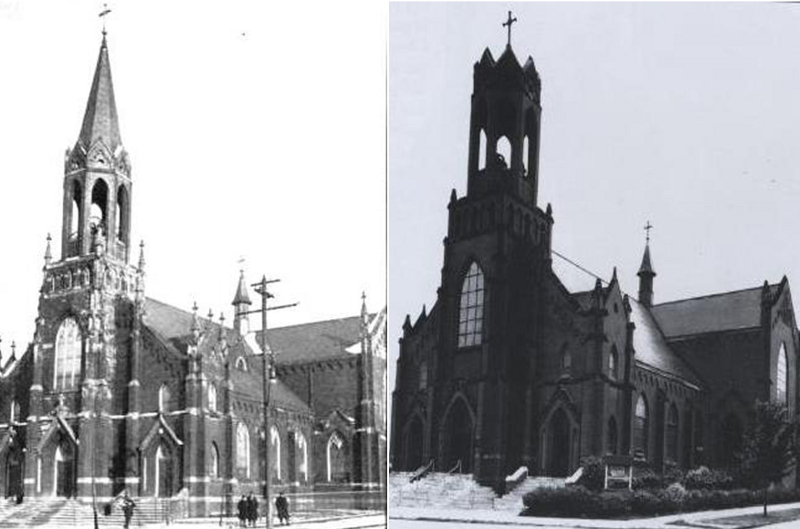The Battle at Saint Ladislas
Hungarians and Slovaks Vie for Control of First Church

On Sunday, August 2, 1891, the congregation of Hungarian (Magyar) and Slovak parishioners gathered in St. Ladislas Roman Catholic Church on the southeast side of Cleveland for mass. Father John Martvon, the church's Slovak pastor, began the mass in Latin, but when the time arrived for him to give his sermon, he began to speak in Slovak. This touched off a riot at the church. The Hungarian parishioners began cursing the priest, which drew an angry response from the Slovak parishioners. Then, someone yelled, "Kill the Slav priest!" Soon, Slovaks and Hungarians were battling one another in the church, while one of the Slovaks, Jacob Gruss, stood by the altar in front of Father Martvon, brandishing a pistol to keep the threatening Hungarians from harming the priest. Eventually, Cleveland police officers from the nearby Fifth Precinct arrived on the scene and dispersed the crowd before anyone was seriously injured.
The riot at St. Ladislas on August 2, 1891, was the opening salvo in a battle for control of the church which had been built just two years earlier in 1889. The church had been built to serve Roman Catholic immigrants from Hungary—primarily Magyars and Slovaks, who had been moving to the southeast side of Cleveland—near the iron works and other factories, since the early 1880s. While these two ethnic groups were from the same country and shared the same religious faith, they had animosity towards one another as the result of a Hungarian nationalist policy known as "Magyarization," which sought to suppress the language, culture and identity of Slovak and other non-Magyar ethnics living in Hungary.
Throughout the month of August 1891, Slovaks and Magyars continued to wage their battle. The Cleveland police officers who staffed the Fifth precinct station remained on high alert throughout the month, especially after another riot broke out in front of Father Martvon's residence on South Woodland Avenue (Buckeye Road) on August 15. While Magyar parish leaders deplored the violence, they hired two prominent Cleveland attorneys--Martin A. Foran, a former county prosecutor and former congressman, and Joseph C. Bloch, a Jewish lawyer born in Hungary, in an attempt to convince the Cleveland Catholic diocese to award the church to the Hungarians and to instruct the Slovaks to build another church somewhere else.
In the twelve day period between August 6 and August 18, at least four meetings were held in which the warring ethnic groups yelled at each other, pleaded with each other, and tried to convince each other to agree to a deal which would give one or the other exclusive control of the church. In the end, the advantage was with the Slovaks. While the Hungarians had hired two of Cleveland's best attorneys to argue their case, the Slovaks, who had not hired legal counsel, instead relied upon their parish priest Father Martvon and Our Lady of Lourdes pastor Stephen Furdek, both Slovak immigrants, to argue their case to the diocese. It was a winning strategy. The Hungarians saw that the Diocese was not going to award them St. Ladislas so they settled with the Slovaks. They relinquished their claim to the church and built a new church, St. Elizabeth of Hungary, two blocks away. The Slovaks paid the departing Magyars $1000 and St. Ladislas officially became Cleveland's first Slovak Roman Catholic Church.
Images









